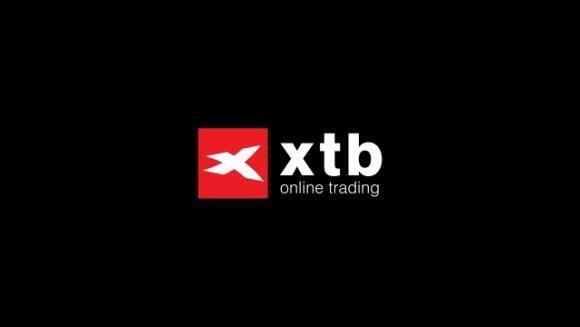Contents
The Aroon Oscillator can generate trade signals or provide insight into the current trend direction of an asset. Wilder’s DMI consists of three indicators that measure a trend’s strength and direction. It can be used to filter trades or generate trade signals. The two Aroon indicators essentially track when the most recent highs and lows happened, correspondingly. Lower Aroon values indicate a more distantly occurring high or low, whereas higher Aroon values indicate a more recently happening high or low.

The Aroon Indicator was developed in 1995 by technical analyst and author Tushar Chande. The fact that he named the indicator “Aroon” which is Sanskrit for “Dawn’s Early Light” demonstrates his belief in his indicator’s trend discovery capabilities. The descriptions, formulas, and parameters shown below apply to both Interactive and Technical Charts, unless noted. Please note that some of the parameters may be slightly different between the two versions of charts.
Consolidation happens when Aroon-up and Aroon-down are moving downwards with parallel lines. If you want to know what oscillators work best with Aroon, we highly recommend combining it with RSI. You can use RSI as an additional signal of a reversal when it forms bearish/bullish divergence, and AroonDown/AroonUp crosses the 50 line to the upside.
Aroon Indicator vs ADX
The Kijun Line, or Base Line, is a component of the Ichimoku Cloud indicator. It provides trade signals when used with the Conversion Line. The indicator consists of the “Aroon up” line, which measures the strength of the uptrend, and the “Aroon down” line, Best Stock Brokers In The Us For 2021 which measures the strength of the downtrend. See CCI, ADX, TDI,VHF, GMMA for other indicators that measure trend direction/strength. Aroon up is the elapsed time, expressed as a percentage, between today and the highest price in the last n periods.

When Aroon Up remains high from consecutive new highs, the oscillator value will be high, following the uptrend. When a security’s price is on a downtrend with many new lows, the Aroon Down value will be higher resulting in a lower oscillator value. The Aroon indicator may at times signal a good entry or exit, but other times it will provide poor or false signals. The buy or sell signal may occur too late, after a substantial price move has already occurred.
Which Indicator Works Best With Aroon?
Therefore, the main factor in the DMI is price, and not time. The Aroon Up and the Aroon Down lines fluctuate between zero and 100, with values close to 100 indicating ExpertOption Forex Broker Overview a strong trend and values near zero indicating a weak trend. The lower the Aroon Up, the weaker the uptrend and the stronger the downtrend, and vice versa.
- One of the most important ones is the Aroon Indicator, which can be used to determine the direction and strength of a trend.
- Technical analysis is only one approach to analyzing stocks.
- Wilder’s DMI consists of three indicators that measure a trend’s strength and direction.
- A surge in Aroon-Up combined with a decline in Aroon-Down signals the emergence of an uptrend.
- As with other indicators, Aroon is best used in combination with other indicators like the RSI and the commodities channel index.
- In some cases, you may find that both indicators are below 50, and this indicates price is in a consolidation phase.
Traders still need to use price analysis, and potentially other indicators, to make informed trading decisions. The Aroon-Up and Aroon-Down indicators monitor the number of time periods since a price struck an x-day high or low. For example, the number of days since a 25-day high is noted by a 25-day Aroon-Up while the number of days since a 25-day low is counted by the 25-day Aroon-Down indicator. This way, the what are pips in the stock markets are different from traditional momentum oscillators in that they are concerned with price in relation to time. The Aroon Indicator is most definitely a very good indicator for identifying both trends as well as periods of consolidation.
Advantages and disadvantages of the Aroon Indicator
Investopedia does not provide tax, investment, or financial services and advice. Investing involves risk, including the possible loss of principal. The Aroon indicator was developed by Tushar Chande in 1995. Which means you can write the 100 period Aroon Up as follows. The Aroon Oscillator is calculated by subtracting the Aroon Down line from the Aroon Up line. Can toggle the visibility of the Aroon Down as well as the visibility of a price line showing the actual current value of the Aroon Down.

Aroon Indicators can be used by traders to detect developing trends, identify consolidations, define corrective periods, and predict reversals in the asset’s price. The Aroon indicator is used for identifying the direction and strength of a trend and also the change from a trend to a flat. The ‘number of time periods’ parameter is required for calculating the indicator. The number of periods from the moment of appearance of the high and low values within a time range is calculated when the indicator is being built. The MACD or “Moving Average Convergence / Divergence” indicator is a momentum oscillator used to trade trends. MACD plots the distance between moving averages and helps traders identify trend…
Trend Strength
Aroon declines as the elapsed time between a new high or low increases. Because 12.5 days marks the exact middle, a reading of exactly 50 is impossible on a daily chart, though it is possible with other timeframes. On daily charts, Aroon is either below 50 or above 50 . A reading above 50 means a new high or low was recorded within the last 12 days or less.
How to Trade With the Aroon Indicator
AAX Trends focuses on market trends and analyzes essential events and factors in the cryptocurrency space. From DeFi, NFTs to GameFi and the metaverse, AAX has the answer to everything in the digital assets industry. As we can see below, the suggestion of a short seen through the bearish crossover was correct. The fxcc broker is a technical indicator, a type of oscillator.
Otherwise, it returns a percent value indicating the time since a new high of the period occurred. The Aroon Indicators are plotted in a separate window from the main chart window that shows price action and are figured in percentage terms with values ranging from 0 to 100. The Aroon indicators are available on SharpCharts as an indicator.
Despite the rally on the far right, the Aroon indicator hasn’t shown a bullish bias yet. This is because the price rebounded so quickly that it hasn’t made a new high in the last 25 periods , despite the rally. When both indicators are below 50 it can signal that the price is consolidating. Traders can watch for breakouts as well as the next Aroon crossover to signal which direction price is going. Cory Mitchell, CMT is the founder of TradeThatSwing.com.
Trading and investing in financial markets involves risk. You are responsible for your own investment decisions. If the Aroon-Up crosses above the Aroon-Down, then a new uptrend may start soon.
In this example, Aroon up is shown in red while Aroon-down is shown in purple. Remember the number of periods since the previous high and low. Both Aroon indicators are expressed in percentage terms, with reading ranging from 0 to 100. The Aroon up line and the Aroon down line are plotted side-by-side to make interpretation easier. When Aroon-Up reaches 100, a new uptrend may have begun. If it remains persistently between 70 and 100, and the Aroon-Down remains between 0 and 30, then a new uptrend is underway.
The shorter-period 14-Day Directional Movement System was discarded as it gave too many false signals. Responsiveness of the two indicators is similar, with identical entry points at . Directional Movement keeps you in the trend longer, but perhaps too long in this case. Performance of either system is enhanced by use of the long-term moving average as a filter. There are two signs a consolidation period is emerging. One is if both the Aroon-Up and the Aroon-Down are below 50.
